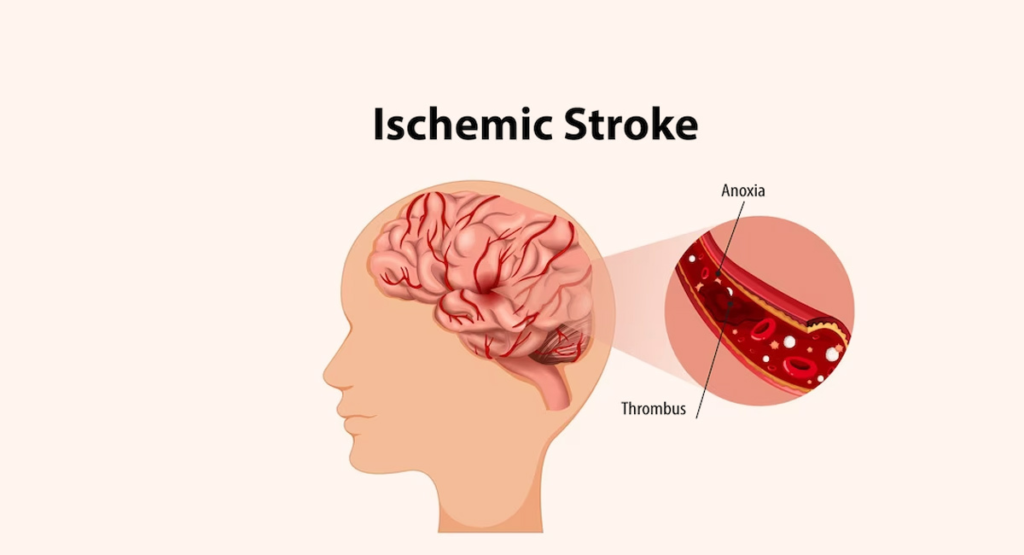Are you or someone you know at risk of experiencing an ischemic stroke? Understanding this serious medical condition is crucial for early detection and effective treatment. In this comprehensive guide, we’ll delve into the treatment options, causes, symptoms, and diagnosis of ischemic strokes to equip you with the knowledge necessary to protect yourself and your loved ones.
What is an Ischemic Stroke?
An ischemic stroke occurs when a blood vessel supplying blood to the brain becomes blocked or narrowed, resulting in severely reduced blood flow (ischemia) to a specific part of the brain. This lack of blood flow deprives brain cells of oxygen and nutrients, leading to cell damage and potentially irreversible brain injury if not promptly treated.
Causes of Ischemic Stroke
Several factors can contribute to the development of ischemic strokes, including:
Atherosclerosis: This condition involves the buildup of plaque (fatty deposits) in the arteries, narrowing the blood vessels and increasing the risk of clot formation.
Hypertension (High Blood Pressure): Chronic high blood pressure can weaken blood vessel walls, making them more susceptible to blockages.
Smoking: Tobacco use significantly increases the risk of developing blood clots and atherosclerosis, making smokers more vulnerable to ischemic strokes.
Diabetes: Individuals with diabetes are at a higher risk of developing cardiovascular diseases, including strokes, due to increased levels of blood sugar damaging blood vessels over time.
Obesity and Sedentary Lifestyle: Being overweight or leading a sedentary lifestyle can contribute to the development of various risk factors for ischemic strokes, such as high blood pressure, diabetes, and high cholesterol levels.
Hyperlipidemia (High Cholesterol): Elevated levels of cholesterol in the blood can lead to the formation of plaque in the arteries, increasing the risk of blockages.
Symptoms of Ischemic Stroke
Recognizing the signs and symptoms of an ischemic stroke is crucial for seeking immediate medical attention. Common symptoms include:
Sudden numbness or weakness: Typically affecting one side of the body, including the face, arm, or leg.
Confusion or trouble speaking: Difficulty forming coherent sentences or understanding speech.
Vision problems: Blurred or double vision, or sudden loss of vision in one or both eyes.
Severe headache: Often described as the worst headache of one’s life, especially when accompanied by other symptoms.
Dizziness or loss of balance: Difficulty walking or maintaining balance, resulting in unexplained falls.
Diagnosis of Ischemic Stroke
Prompt diagnosis is essential for initiating appropriate treatment and minimizing potential brain damage. Healthcare professionals employ various diagnostic tests to confirm the presence of an ischemic stroke, including:
Imaging Tests: Techniques such as computed tomography (CT) scans and magnetic resonance imaging (MRI) can provide detailed images of the brain, allowing physicians to identify areas affected by reduced blood flow or ischemia.
Blood Tests: Laboratory tests may be conducted to assess blood clotting factors, cholesterol levels, and blood sugar levels, which can help identify underlying conditions contributing to the risk of ischemic strokes.
Electrocardiogram (ECG or EKG): This test records the electrical activity of the heart and can detect irregular heart rhythms (arrhythmias) or evidence of a previous heart attack, which may increase the risk of blood clots.
Treatment Options for Ischemic Stroke
The primary goal of treatment for ischemic strokes is to restore blood flow to the affected area of the brain and prevent further damage. Treatment options may include:
Intravenous Thrombolytic Therapy: Also known as clot-busting medication, thrombolytics such as tissue plasminogen activator (tPA) can dissolve blood clots and restore blood flow if administered within a specific time window after symptom onset.
Mechanical Thrombectomy: This procedure involves the insertion of a catheter into the blocked blood vessel to physically remove the clot, restoring blood flow to the brain.
Antiplatelet Medications: Drugs such as aspirin or clopidogrel may be prescribed to prevent the formation of new blood clots and reduce the risk of recurrent strokes.
Anticoagulant Therapy: Medications like warfarin or direct oral anticoagulants (DOACs) may be recommended to prevent blood clot formation in individuals with underlying conditions such as atrial fibrillation.
Blood Pressure Management: Controlling hypertension through lifestyle modifications or medication can help reduce the risk of future strokes.
Conclusion
Ischemic strokes are a leading cause of disability and death worldwide, but early recognition and prompt treatment can significantly improve outcomes and quality of life for affected individuals. By understanding the causes, symptoms, diagnosis, and treatment options for ischemic strokes, you can take proactive steps to reduce your risk and protect your brain health. Remember, if you or someone you know experiences symptoms suggestive of a stroke, don’t delay seeking medical attention—every minute counts in minimizing the impact of this potentially life-threatening condition.
We are India’s first comprehensive continuum care provider. We provide multidisciplinary out of hospital care to acute and post-acute and chronically ill patients at our critical care facilities and your home.

